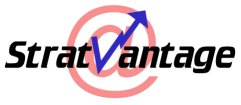|


Be on the wave or under it™
The News – 08/15/01
Congress Puts the Squeeze On ICANN
Poor Vint Cerf. The guy practically invents the Internet (by inventing the TCP/IP transport it runs on) and this is his reward: to preside over a bureaucracy that should be the most powerful force on the Internet, but which is mired in global politics and has little independent power. Cerf is Chairman of ICANN (The Internet Corporation for Assigned Names and Numbers), the non-profit corporation that is supposed to be the authority on a number of technical workings of the Internet, including the assignment of domain names. Domain names form part of the human-understandable addresses you type into your Web browser. Examples include yahoo.com, aol.com, and StratVantage.com.
Over the last year or so, ICANN has struggled to identify and release what are known as Generic Top Level Domains (gTLDs). The current gTLDs include the popular .com and .net as well as .gov, .edu, and .mil. While it is possible for companies or individuals to make up and register any arbitrary second level domain (the yahoo, aol, or StratVantage portions of a Web site address), ICANN is the only recognized entity that can authorize the creation of new gTLDs, although others have tried (for example, New.net, as previously reported in SNS). ICANN authorized the creation of seven new gTLDs (.biz, .info, .pro, .name, .coop, .aero, .museum) last November. These new gTLDs are in the process of being rolled out now, as previously reported here and here.
ICANN’s major problem is summarized in its backgrounder document:
ICANN has no statutory or other governmental power: its authority is entirely a consequence of voluntary contracts and compliance with its consensus policies by the global Internet community. It has no power to force any individual or entity to do anything; its ‘authority’ is nothing more than the reflection of the willingness of the members of the Internet community to use ICANN as a consensus development vehicle.
While the Internet has always worked on “rough consensus and working code,” the consensus has gotten rougher and harder to obtain since the Internet became commercialized in 1995. The rest of the world has resented the control the US government has had over the Internet, and especially the arbitrary rule of Network Solutions, which used to have the monopoly on assigning domain names until ICANN and the US government opened the task to competition in 1999.
As if dealing with global squabbling over domains wasn’t enough, now ICANN Chairman Vint Cerf has to deal with pressure from Congress which, in its typically clueful way, has decided to hop on the bandwagon by demanding that ICANN add even more gTLDs. The House Energy & Commerce Committee and the Internet Subcommittee sent a joint letter Monday to Commerce Secretary Donald Evans urging him to lean on ICANN to create a .kids domain. Apparently our elected representatives feel if there’s a .kids domain, somehow kids will be safer on the Internet. In order for that to happen, of course, we’d need some kind of oversight organization to approve not only the applicants for these domains, but also all content. Hmmm. Sounds like censorship. But it’s for the kids! Who could complain? Anyway, the oversight organization is not likely to be ICANN, with its 14 staffers and 19 board members (OK, what’s wrong with that picture? More bosses than workers?). Why, this sounds like a job for SuperCongress!
Strangely enough, Congress is missing the point. More gTLDs are not going to solve anything, as I argue in the TrendSpot and a previous SNS. Basically trademark owners will register in every unrestricted gTLD. In addition to coke.com, coke.net, and coke.org, you’ll see coke.biz, coke.info, coke.name, even coke.kids, all owned by the Coca Cola Company. How does this help? Rather than opening up opportunities and widening the name space, the new gTLDs will just increase the number of domains trademark holders will register. While restrictions on some of the gTLDs will help (.pro is only open to accountants, lawyers, and physicians), I think the new system will just foster confusion. I can even see Coke arguing that they should be granted coke.museum because they run a museum of Coca Cola products.
Whatever happens, businesses need to be aware that the opportunities for registering their trademarks in the new gTLDs may be drawing to a close. The sunrise period, the period during which trademark owners can make their case for ownership of a domain name, for the .info domain ends August 27th, for example. If you don’t register your name, what are the chances your competitor or a domain squatter will? So if you’ve got a .com, you need to be acting now to secure your new .biz or .info domain name.
Newsbytes
Briefly Noted
- Shameless Self-Promotion Dept.: I'll be speaking at the Minnesota Entrepreneurs Club pre-meeting workshop at 5:30 p.m. today, Tuesday, August 14th in St. Paul, MN. The meeting is at the Minnesota Business Academy. My topic is “Will You Have to Have It? What You Need to Know About Future Tech and Your Business.”
Also, my white paper, Taking Control of the B2B Exchange: What's Next in the Supply Chain Evolution, is now available on Manyworlds and is rated four stars. I am honored to share the page with eCommerce expert Mohanbir Sawhney.
Plus, I’ve updated my Resources page to include several interesting links to eCommerce, online news, information, and opinion Web sites. These are some of the sources I use to compile SNS. The page is a bit disorganized at the moment, as I’m still adding to it.
MN Entrepreneurs
- I’m Getting a Bit Floozy: Flooz (stupid name alert), the online incentives vendor used by firms such as P2P hive computing firm DataSynapse, has ceased operations and is looking for a merger or acquisition. Flooz worked as sort of an online trading stamps (remember S&H Green Stamps or Gold Bond Stamps?) provider. Companies would buy Flooz points and distribute them to users. In DataSynapse’s case, they used Flooz to compensate members who donate computer time to their P2P network. Visits to Flooz’s Web site produce a message that they can’t handle your transaction now, but are working to remedy the situation. In a press release, Flooz said they have suspended operations due to the effect that economic conditions have had on its client base. The statement also said that capital market conditions have proved challenging and that the company is engaged in merger discussions with more than one company.
Flooz
- The New Harrow Report: As previously reported here, Jeffrey Harrow has left Compaq and the newsletter he wrote for 15 years, the Rapidly Changing Face of Computing, and struck out on his own. He recently released the inaugural issue of The Harrow Technology Report, which, oddly, looks a whole heck of a lot like the old RCFOC, for which we’re grateful. Harrow promises to broaden the scope of his new newsletter beyond the familiar computing, wireless, nanotechnology, and related emerging technology focus of RCFOC.
The Harrow Technology Report
 Access Up In the Air: Also as previously reported in SNS, chances are getting better that your next Internet access provider will service you from at least 50,000 feet straight up. Two more companies are pursuing the goal of delivering access from perpetually flying high altitude aircraft. AeroVironment’s Helios unmanned 254-foot flying wing uses solar panels and a water-based fuel cell to fly at 65,000 feet around the clock. The company recently completed an 18-hour record-setting continuous flight and on Monday, broke the high altitude flight record, crusing at 85,100 feet. The company will offer up to 150Mbps service. Unlike the Helios, which would land every 6 months or so for Access Up In the Air: Also as previously reported in SNS, chances are getting better that your next Internet access provider will service you from at least 50,000 feet straight up. Two more companies are pursuing the goal of delivering access from perpetually flying high altitude aircraft. AeroVironment’s Helios unmanned 254-foot flying wing uses solar panels and a water-based fuel cell to fly at 65,000 feet around the clock. The company recently completed an 18-hour record-setting continuous flight and on Monday, broke the high altitude flight record, crusing at 85,100 feet. The company will offer up to 150Mbps service. Unlike the Helios, which would land every 6 months or so for  servicing, Advanced Technology Group's StratSat blimp will stay aloft at 60,000 feet for up to five years at a time. The Teflon®-coated airship will also use solar power and can carry a payload the equivalent of three 747s. servicing, Advanced Technology Group's StratSat blimp will stay aloft at 60,000 feet for up to five years at a time. The Teflon®-coated airship will also use solar power and can carry a payload the equivalent of three 747s.
Newhouse News Service
- E911 To Be Delayed: While we’re at it, another update to a previously-reported story: Verizon and the other major US wireless carriers are warning that they won’t make the October deadline for compliance with the FCC’s E911 initiative. E911 specifies that carriers be able to locate a cell phone making a 911 call to within 167 feet for 67 percent of calls, and 500 feet for 95 percent of calls. The 1997 mandate has already been delayed, but Verizon claims the technology to enable compliance has only just now come on the market. Companies not showing significant progress could be fined. Locating cell phones will open up the possibility of location-based services, as well as location-based advertising. See the TrendSpot for more information.
New York Times (it’ll cost you)
- Oh, How the Mighty Have Fallen, Part DXCIII: Web site webmergers.com reports that at least 592 Internet companies have folded since January 2000, 32 in July alone. Well, this is not quite a quit-business failure, more of a bailure: The founder of Buy.com has bought all outstanding shares of the company, which once traded as high as $209, for 16 cents apiece. On a positive note, July’s failures were the lowest since September 2000, and buyers spent more than $3 billion acquiring 99 dot-coms during the month.
eCommerce Times
Return to Mikeís
Take
|







